‘Vatana na Phorna- Droplets of Peas’ a simple dish with a rather alluring name. I am always intrigued by the thought that goes into naming a dish or a food preparation. The frugal times we are tackling currently were a norm in the past, the cooks needed to be both wise and clever with the limited ingredients at their disposal. As usual there might have been faces frowning upon regular meals, to please whom the brilliant creators played either with the ingredients or the language. This dish here seems to be an outcome of the later!! While exploring the genesis of the names of Gujju foods, I had a chat with Shwetal @shwetalbhatt who shared this interesting trivia of how the Nagar Brahmin ( maestros of Gujarati language and literature) community of Gujarat have the habit to name their foods romantically – like the khichri spreading like a moon on the plate is called ‘Chandrakala’ while tempered puffed rice is called ‘Premodi’ 😍 Phorna comes from the word Phora/Fora/ફોરા meaning drops as in Raindrops /Varsad na phora/વરસાદ ના ફોરા . Vatana na Phorna/વટાના ના ફોરના is fresh peas scattered over bed of poha/rice flakes or an upscale version of Bataka Poha/aloo poha or a yellow version of Banaras’s Chura Matar. Gujjus love their poha with all the extra taam-jham; meaning the sev, pomegranate arils, some chopped onions, roasted peanuts and likes. Since this was our brunch yesterday we included some cucumber and spring onions. We needed the dish to not just sound beautiful, it had to look pretty too. The Poha I have used here are Kerala Sundari Poha of West Bengal shared by Jayanthi @spirit_of_the_earth_2017 and the peas are frozen ones we always have stocked in our freezer!! The beautiful names associated makes me wonder about the amount romance and beauty is involved in this one humble dish!!
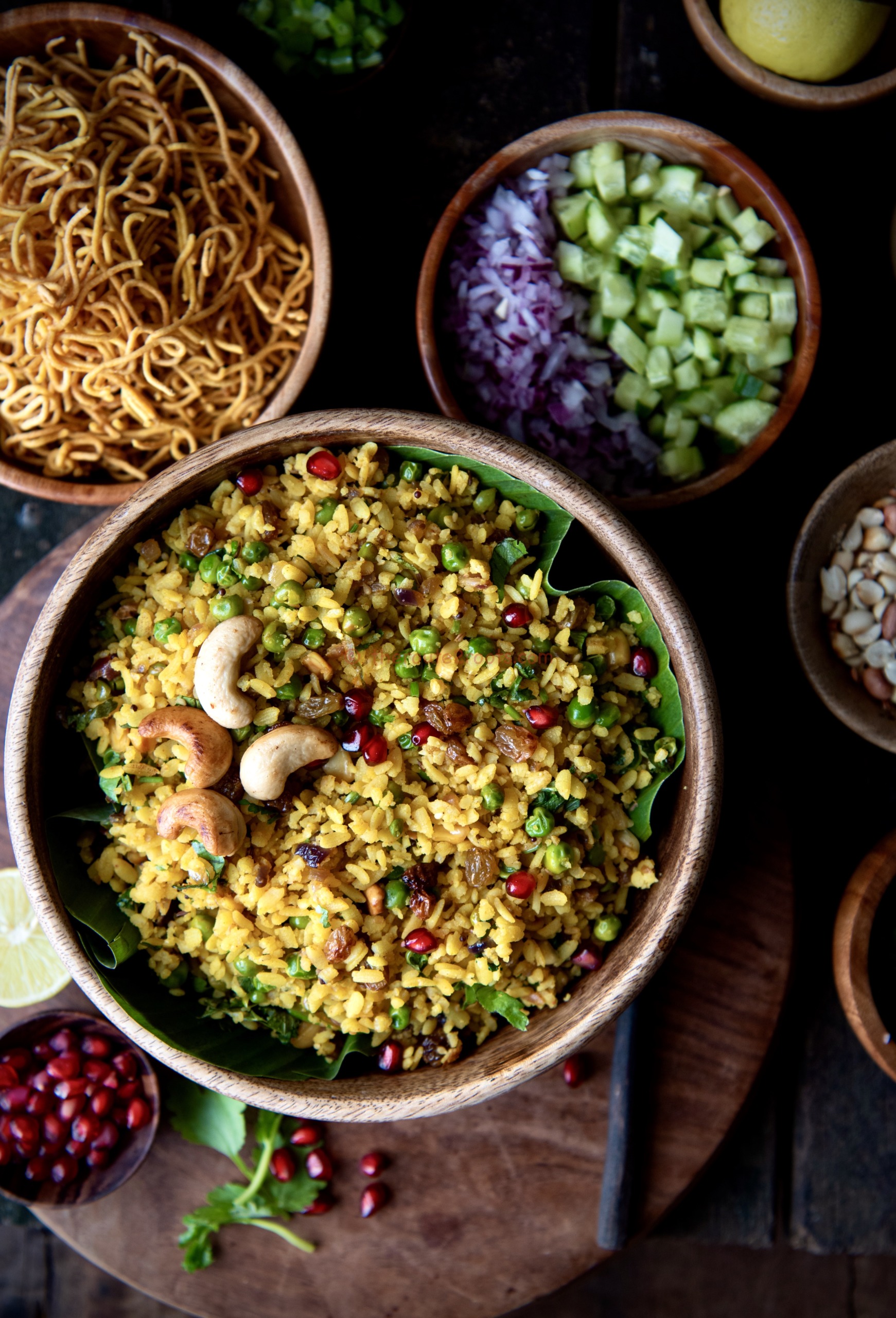
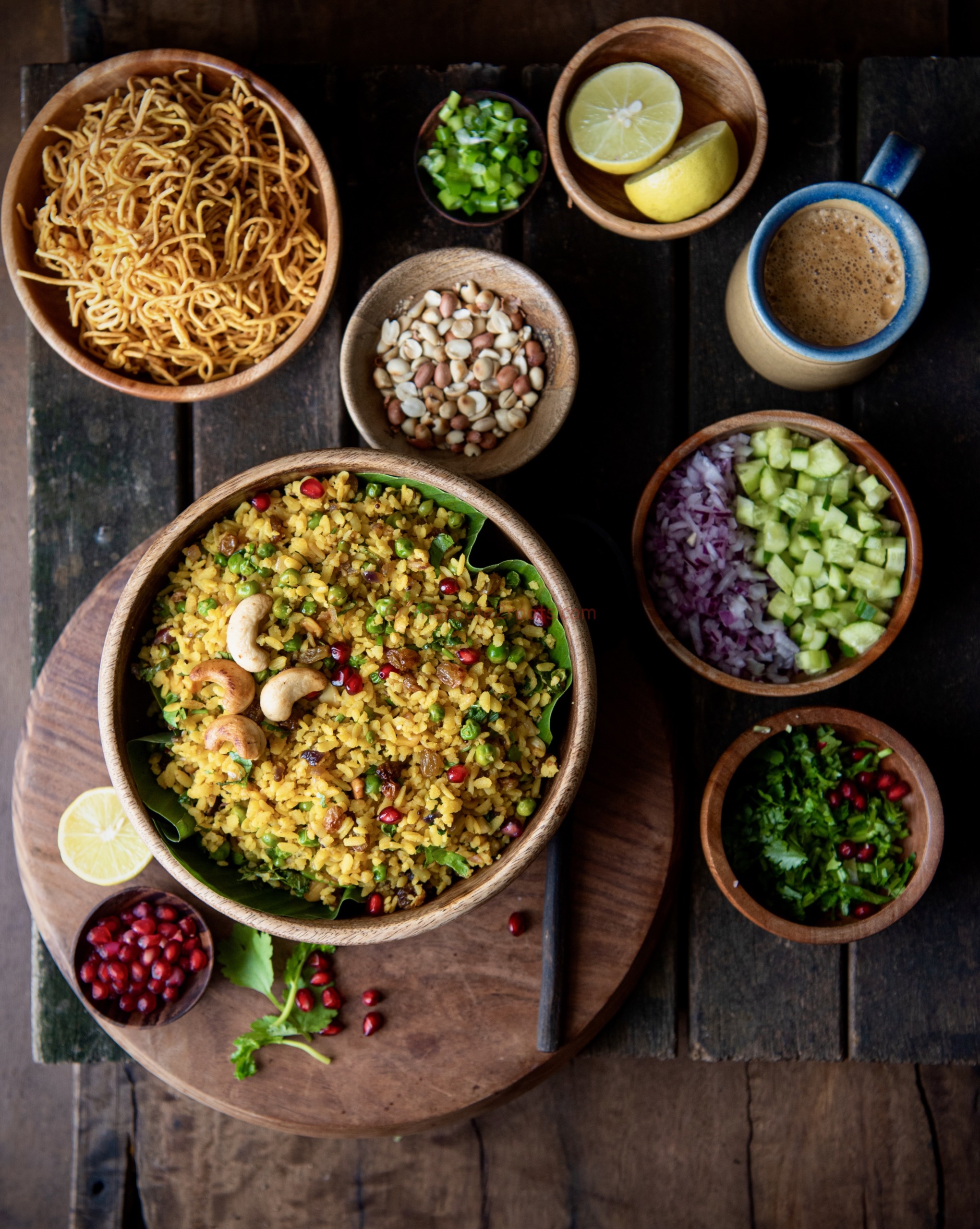
Vatana Na Phorna
Ingredients
- 250 grams Poha/beaten rice (one that is used to make aloo poha)
- 1 cup peas, shelled, boiled.
- 1 medium onion, chopped well
- 1/2 cup coriander, chopped finely
- 1/4 cup peanuts, roasted and coarsely pounded.
- 1/4 cups cashews, optional
- 2 green chillies, finely chopped or minced
- 1 inch ginger, finely chopped or minced
- 2 tablespoons raisins, optional
- 2 tablespoons sesame seeds
- 2-3 teaspoons lemon juice
- 2 teaspoons sugar
- 1 teaspoon rai/mustard seeds
- 1 teaspoon lal mirch/red chilli powder
- 1 teaspoon haldi/ turmeric powder
- 1/2 teaspoon garam masala powder (optional)
- 1/4 teaspoon asafoetida/hing
- 1 spring curry leaves
- 3 -4 tablespoons oil
Instructions
Wash the posh well
Sprinkle some milk or water over the washed poha, so that they soak well. You might need 1/4 cup of either milk or water. 15-20 minutes later drain the poha and spread them over a plate. I have used Poha made with heritage rice hence they were thick and needed greater soaking time.
Heat a large kadai. keep the flame medium - low.
Add the oil. Heat it.
Add the raisins, remove once they balloon up. Keep aside.
Add cashews, fry them to light brown colour, remove and keep aside.
Now to the same oil add the mustard seeds. Once they splutter add the curry leaves, onions and asafoetida. Sauté the onion to golden brown. Mid way through the sautéing add the minced chilli and ginger. Keep the flame low.
Add the boiled peas and cook for 5 minutes.
Add sesame seeds, spices, salt, sugar, peanuts. Mix everything well. Cook for couple of minutes.
Mix in the smoked poha. Mix everything well.
Cover and cook for few minutes.
Add the lemon juice and mix well.
Lastly add the raisins, cashews and chopped coriander.
Serve warm.
Notes
The accompaniments showcased here can be lesser or greater in number. Seasonal raw mangoes are also included in the spread.

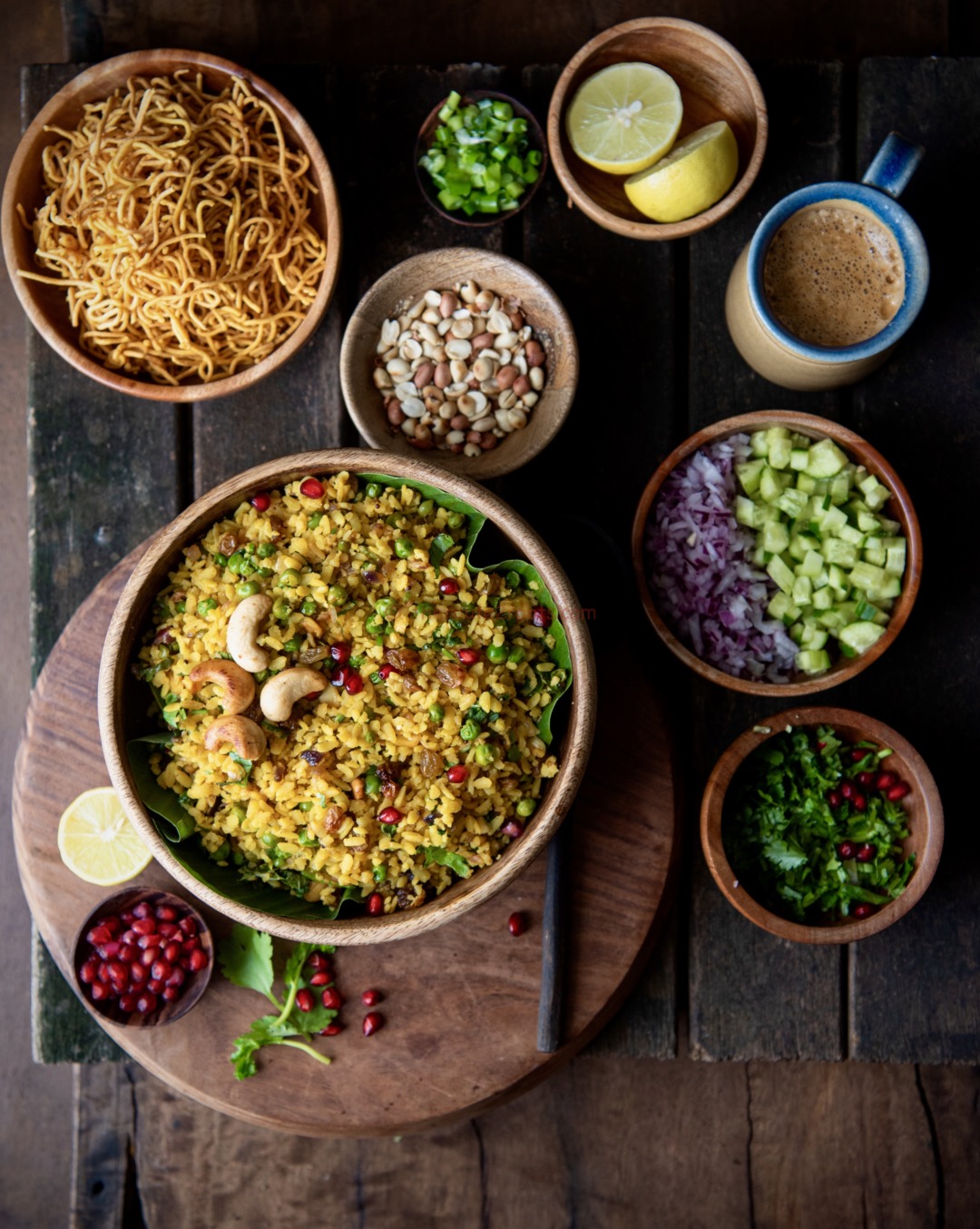

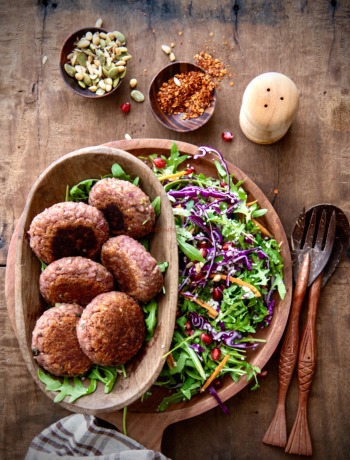
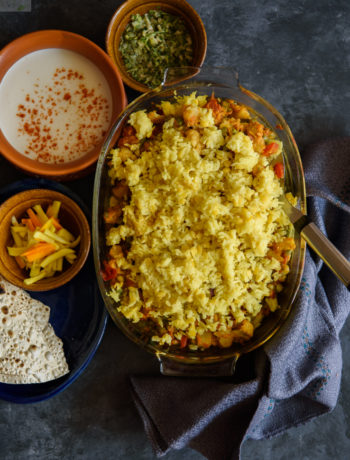
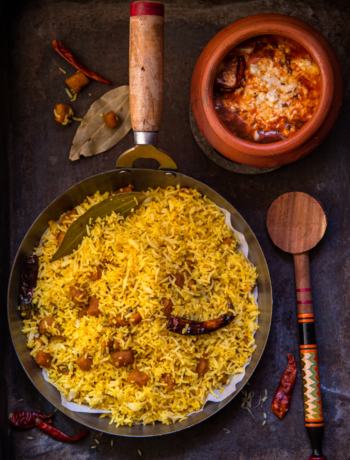
4 Comments
Shweta
June 10, 2021 at 6:31 pmThe name is indeed poetic and also an indication to how nagara made even simplest dishes sound alluring.
A correction is required. Khichdi has even more beautiful name. It’s known as Sukhpavni. Chandrakala is the name given to bajra no rotlo. Another beaut… Gulabchatakiyu… Guess what it is
Sheetal
June 10, 2021 at 10:01 pmwow wow…you have made me curious for more. Is Gulabchatakiyu for Gulkand Paan? I am sure you know many more. Do share. Thank you so much dear Shweta.
shweta
April 2, 2022 at 12:29 pmgulabchatakiyu is vaghareli rotli. 🙂
Nagars love wordplay. The chakla becomes Aadani, muthiya is known as vaata, rotli is known as lechi.
Sheetal
April 13, 2022 at 6:05 pmthat is so unique. Yes, I am learning that 😁 and I always thought because they are longer logs muthiya become vata.